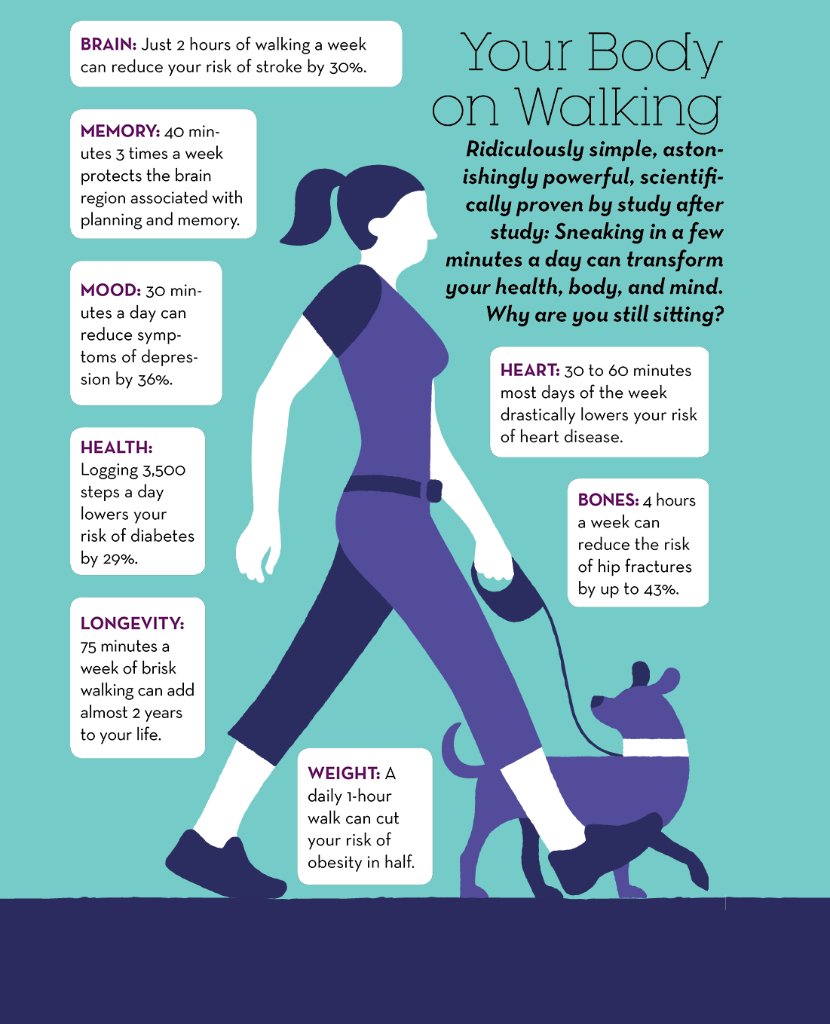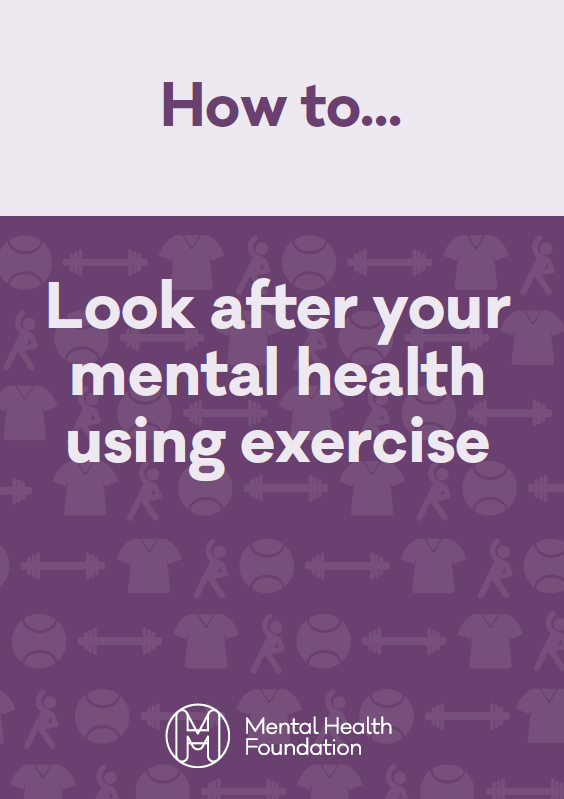Walk Your Way To Better Mental Health: Depression Risk Lowered By 30%
Are you looking for a simple and effective way to improve your mental health? Well, the answer may be as simple as taking a walk. According to a recent study, walking can lower your risk of depression by a staggering 30%. That’s right, by just putting on your walking shoes and getting outside for a stroll, you can significantly improve your mental well-being. In this article, we will explore the benefits of walking on mental health and how it can positively impact your overall well-being. So, lace up your shoes and let’s discover the incredible power of walking for better mental health.
The Link Between Walking and Mental Health
Physical Activity and Mental Well-being
Physical activity has long been recognized as having a positive impact on mental well-being. Regular exercise has been shown to alleviate symptoms of depression and anxiety, reduce stress levels, improve sleep quality, and boost overall mood. Among the various forms of physical activity, walking stands out as one of the most accessible and sustainable options for promoting mental health.
Benefits of Walking for Mental Health
Walking, as a low-impact exercise, offers numerous benefits for mental health. It not only improves cardiovascular fitness, but also releases endorphins, which are known as “feel-good” hormones. These endorphins can help reduce symptoms of depression and anxiety, enhance self-esteem, and promote a sense of well-being. Additionally, walking provides an opportunity for relaxation, contemplation, and connection with nature, all of which contribute to improved mental health.
Study Findings on Walking and Depression Risk
A recent study published in the American Journal of Psychiatry revealed a remarkable link between walking and a reduced risk of depression. The study found that individuals who engaged in regular walking had a 30% lower risk of developing depression compared to those who did not engage in any physical activity. These findings highlight the potential of walking as a preventive measure against depression and underscore the importance of incorporating walking into daily routines for better mental health.
Understanding Depression
What is Depression?
Depression is a common mental health disorder characterized by persistent feelings of sadness, loss of interest or pleasure in activities, changes in appetite or weight, sleep problems, fatigue, difficulties in concentration, and thoughts of suicide or self-harm. It is more than just occasional feelings of sadness, as it significantly impacts daily functioning and quality of life. Depression can affect anyone, regardless of age, gender, or socioeconomic status.
The Prevalence of Depression
Depression is a global health issue, affecting over 264 million people worldwide. It is estimated that approximately 17% of the global population will experience a significant episode of depression at some point in their lives. Furthermore, depression is the leading cause of disability worldwide, highlighting the urgent need for effective strategies to prevent and manage this debilitating condition.
Risk Factors for Depression
While the causes of depression are not fully understood, there are several risk factors that have been identified. These include genetic predisposition, certain life events such as loss or trauma, chronic medical conditions, substance abuse, and imbalances in brain chemistry. Understanding these risk factors can help in the development of targeted interventions to prevent and treat depression.

Exploring Exercise as a Treatment for Depression
Exercise as a Complementary Treatment
Exercise is increasingly being recognized as an effective complementary treatment for depression. It can be used in conjunction with other therapeutic interventions, such as medication and psychotherapy, to enhance the overall management of depressive symptoms. The benefits of exercise extend beyond simply improving physical fitness, as it has been shown to positively influence mood, cognition, and neurobiological processes associated with depression.
Mechanisms of Exercise on Mental Health
The mechanisms through which exercise exerts its positive effects on mental health are not fully understood. However, several theories have been proposed. Exercise is thought to increase the production of endorphins, which are neurotransmitters that help regulate mood. It also promotes the release of other chemicals in the brain, such as serotonin, dopamine, and norepinephrine, all of which play a crucial role in mood regulation. Furthermore, exercise has been shown to reduce inflammation and enhance brain plasticity, which can contribute to improved mental well-being.
Effectiveness of Exercise in Reducing Depressive Symptoms
Numerous studies have demonstrated the effectiveness of exercise in reducing depressive symptoms. Regular physical activity has been shown to decrease feelings of sadness, improve self-esteem, and enhance overall mood. Furthermore, exercise can help alleviate cognitive symptoms associated with depression, such as difficulties in concentration and memory. The positive effects of exercise on depressive symptoms are comparable to those of antidepressant medications, highlighting its potential as a non-pharmacological treatment option.
Role of Walking in Mental Health Improvement
Why Walking is Accessible and Sustainable
One of the key advantages of walking is its accessibility and sustainability. Unlike many other forms of exercise, walking does not require any special equipment or facilities. It can be done virtually anywhere, at any time, and at your own pace. Walking can easily be incorporated into daily routines, whether it’s commuting to work, running errands, or taking leisurely strolls in the neighborhood. This accessibility and ease of integration make walking a practical and sustainable exercise option for improving mental health.
Physical and Psychological Benefits of Walking
Walking offers numerous physical and psychological benefits that contribute to improved mental health. On a physical level, regular walking can help improve cardiovascular fitness, reduce the risk of chronic diseases, and contribute to weight management. Psychologically, walking releases endorphins, which can elevate mood, reduce stress levels, and enhance self-esteem. Additionally, walking provides an opportunity for solitude, self-reflection, and connection with nature, all of which have been shown to have a positive impact on mental well-being.
Walking vs Other Forms of Exercise for Mental Health
While all forms of exercise have the potential to benefit mental health, walking holds particular advantages over other activities. Its low-impact nature makes it suitable for individuals of all fitness levels, including those with physical limitations or health conditions. Walking is also a more sustainable exercise option, as it can be easily integrated into daily routines without requiring significant time commitments or financial resources. These factors make walking a highly accessible and viable option for individuals seeking to improve their mental health through exercise.

Research Study: Walking and Depression Risk
Study Design and Participants
The study investigating the link between walking and depression risk was a large-scale observational study that followed a cohort of participants over a period of several years. The study included thousands of individuals from diverse demographic backgrounds, ensuring a representative sample for analysis.
Measuring Depression Risk
To measure depression risk, participants were assessed using validated tools that measure depressive symptoms and diagnose depression according to established criteria. The assessments were conducted at regular intervals throughout the study period, allowing for the evaluation of changes in depression risk over time.
Results of the Study
The study found a significant association between engaging in regular walking and a lower risk of developing depression. Individuals who walked on a regular basis had a 30% lower risk of developing depression compared to those who did not engage in any form of physical activity. The findings remained consistent even after adjusting for confounding factors such as age, gender, socioeconomic status, and baseline mental health status. These results provide compelling evidence for the beneficial effects of walking on mental health.
Implications for Mental Health Interventions
Incorporating Walking into Treatment Plans
The findings of the study highlight the importance of incorporating walking into treatment plans for individuals with depression or at risk of developing depression. Mental health professionals should consider prescribing walking as part of a holistic approach to managing depressive symptoms. Integrating regular walking into treatment plans can help enhance the overall effectiveness of therapeutic interventions and improve long-term outcomes for individuals with depression.
Promoting Walking in Community Mental Health Programs
Community mental health programs can play a crucial role in promoting the benefits of walking for mental health. By organizing walking groups, providing education and resources, and creating supportive environments for physical activity, community programs can empower individuals to adopt regular walking as a means to improve their mental well-being. This approach fosters social connections, promotes self-care, and enhances resilience, all of which contribute to a healthier community.
Potential Challenges and Solutions
While walking holds great potential for mental health improvement, there may be challenges that need to be addressed. Some individuals may face physical limitations or health conditions that make walking difficult. In such cases, alternative forms of low-impact exercise can be explored, such as swimming or cycling. Additionally, motivating individuals to initiate and maintain a walking routine can be challenging. Educational campaigns, social support networks, and the integration of technology-based tracking tools can help overcome these barriers and sustain long-term adherence to a walking regimen.

Ways to Incorporate Walking into Daily Routine
Setting Realistic Goals and Tracking Progress
Incorporating walking into your daily routine starts with setting realistic goals. Begin by identifying how much time you can dedicate to walking each day and gradually increase your walking duration and intensity. Tracking your progress using a pedometer or a smartphone app can help monitor your achievements and provide motivation to keep going. Celebrate milestones and acknowledge the positive impact walking has on your mental health.
Making Walking Social and Enjoyable
Walking can become a social activity by inviting friends, family members, or coworkers to join you. Plan regular walking meetups, organize walking challenges, or participate in charity walks together. Engaging in conversations, listening to music, or enjoying audiobooks while walking can also make the experience more enjoyable. By making walking a social and pleasurable activity, you are more likely to maintain a consistent routine.
Integrating Walking with Other Activities
Look for opportunities to integrate walking into your daily activities. Instead of using elevators or escalators, opt for stairs. Park your car farther away from your destination, allowing yourself a longer walk. Consider walking or cycling to nearby places instead of using motorized transportation. These small adjustments can help incorporate more walking into your daily routine without requiring significant changes to your schedule.
Tips for Maintaining a Walking Routine
Taking Advantage of Different Environments for Walking
Varying your walking environments can provide new stimuli and keep your routine interesting. Explore parks, trails, beaches, and urban areas to experience different sceneries and atmospheres. Take advantage of nature’s calming effects by incorporating nature walks into your routine. Engaging with different environments can enhance the mental health benefits of walking and prevent boredom.
Dealing with Barriers and Obstacles
It is important to anticipate and address potential barriers that may hinder your walking routine. Inclement weather, time constraints, or feeling tired may discourage you from walking. Planning ahead, dressing appropriately for the weather, and identifying alternative activities for unfavorable conditions can help overcome these obstacles. By acknowledging and proactively addressing potential barriers, you can maintain a consistent walking routine.
Sustaining Motivation
Motivation plays a crucial role in sustaining a walking routine. Set short-term and long-term goals to keep yourself motivated. Reward yourself for achieving milestones, whether it’s by treating yourself to a small indulgence or enjoying a relaxing activity. Joining walking groups or seeking an accountability partner can also provide support, encouragement, and additional motivation. By finding strategies that work for you, you can stay motivated and reap the ongoing benefits of walking for mental health.

Walking as Self-Care and Stress Reduction
Walking as a Mindfulness Practice
Walking can be a form of mindfulness practice, allowing you to be fully present in the moment and engage all your senses. Pay attention to the sensations in your body, the sounds of nature or city life, and the sights around you. By focusing on the present moment and letting go of worries and distractions, you can experience a sense of relaxation and calmness. Incorporating mindful walking into your routine can be an effective self-care strategy for stress reduction.
Benefits of Nature Walks for Mental Health
Spending time in nature has been shown to have numerous benefits for mental health. Nature walks, in particular, offer a unique opportunity to engage with the natural environment and experience its therapeutic effects. Studies have shown that exposure to nature can reduce stress, improve mood, enhance attention and cognitive function, and increase feelings of well-being. By incorporating nature walks into your walking routine, you can maximize the mental health benefits of walking.
Walking to Manage Daily Stress
Walking can serve as a powerful tool for managing daily stress. When faced with stressful situations, taking a break to go for a walk can help clear your mind, relax your body, and restore a sense of calm. The rhythmic movement, accompanied by deep breathing, can help regulate your stress response and promote a state of relaxation. Incorporating regular walking breaks into your daily routine can provide a simple yet effective strategy for coping with stress and maintaining mental well-being.
Conclusion
The Power of Walking for Mental Health
Walking offers a multitude of benefits for mental health, making it an accessible and sustainable option for improving well-being. Engaging in regular walking can reduce the risk of depression, alleviate depressive symptoms, enhance mood, reduce stress levels, and improve overall mental well-being. With its simplicity, affordability, and flexibility, walking holds the power to positively impact mental health for individuals of all ages and abilities.
Encouraging a Walking Culture for Well-being
Encouraging a walking culture within communities, workplaces, and educational institutions is essential for promoting mental health across populations. By incorporating walking into daily routines and creating supportive environments that prioritize physical activity, we can collectively foster a culture of well-being. This cultural shift can contribute to the prevention of mental health disorders, the reduction of stigma surrounding mental health, and the overall enhancement of individual and community resilience.
Further Research and Potential Limitations
While the existing research on walking and mental health is robust, further investigation is needed to explore specific mechanisms, optimal dosages, and long-term effects. Additionally, the association between walking and mental health may be influenced by various factors, such as individual characteristics, cultural differences, and environmental factors. Understanding these potential limitations can guide future research and inform the development of tailored interventions that maximize the mental health benefits of walking for diverse populations.

















